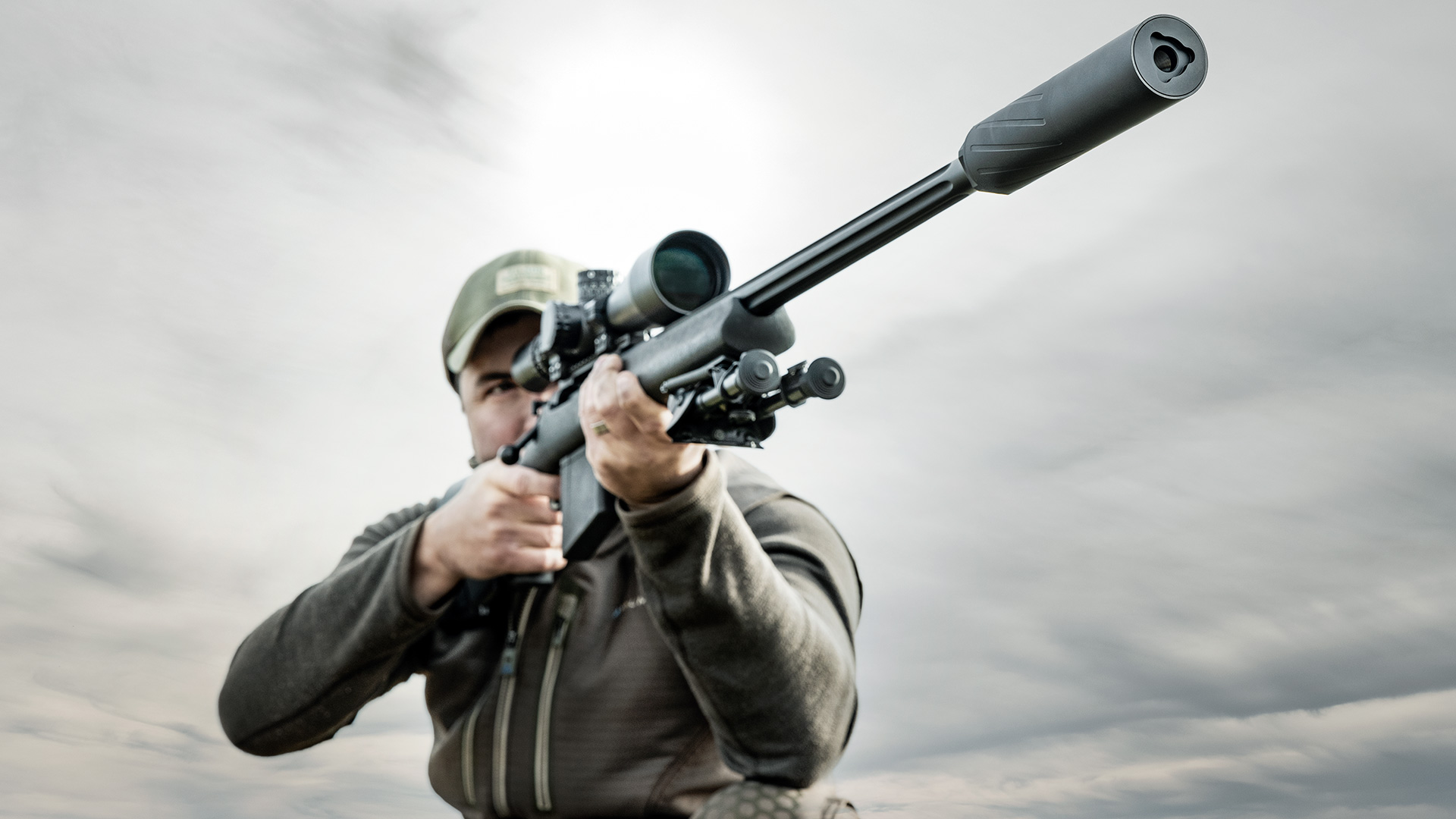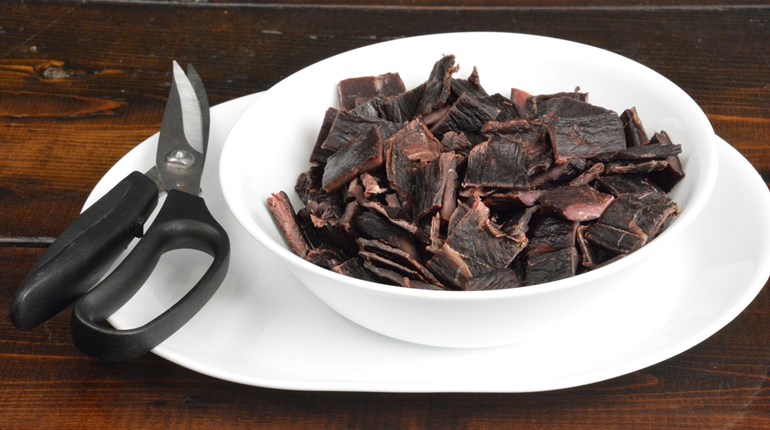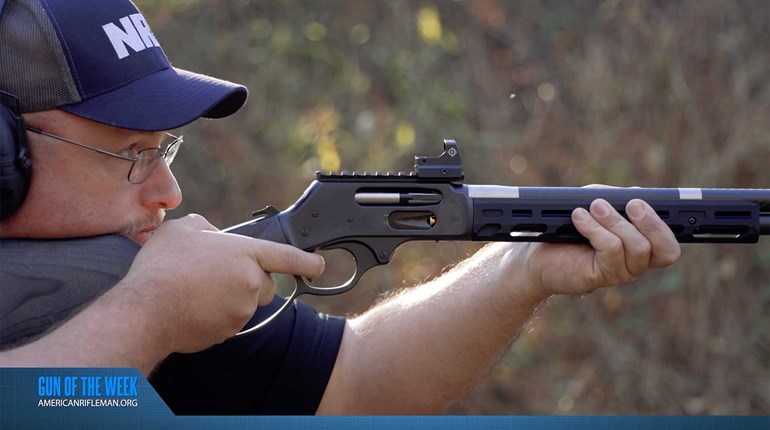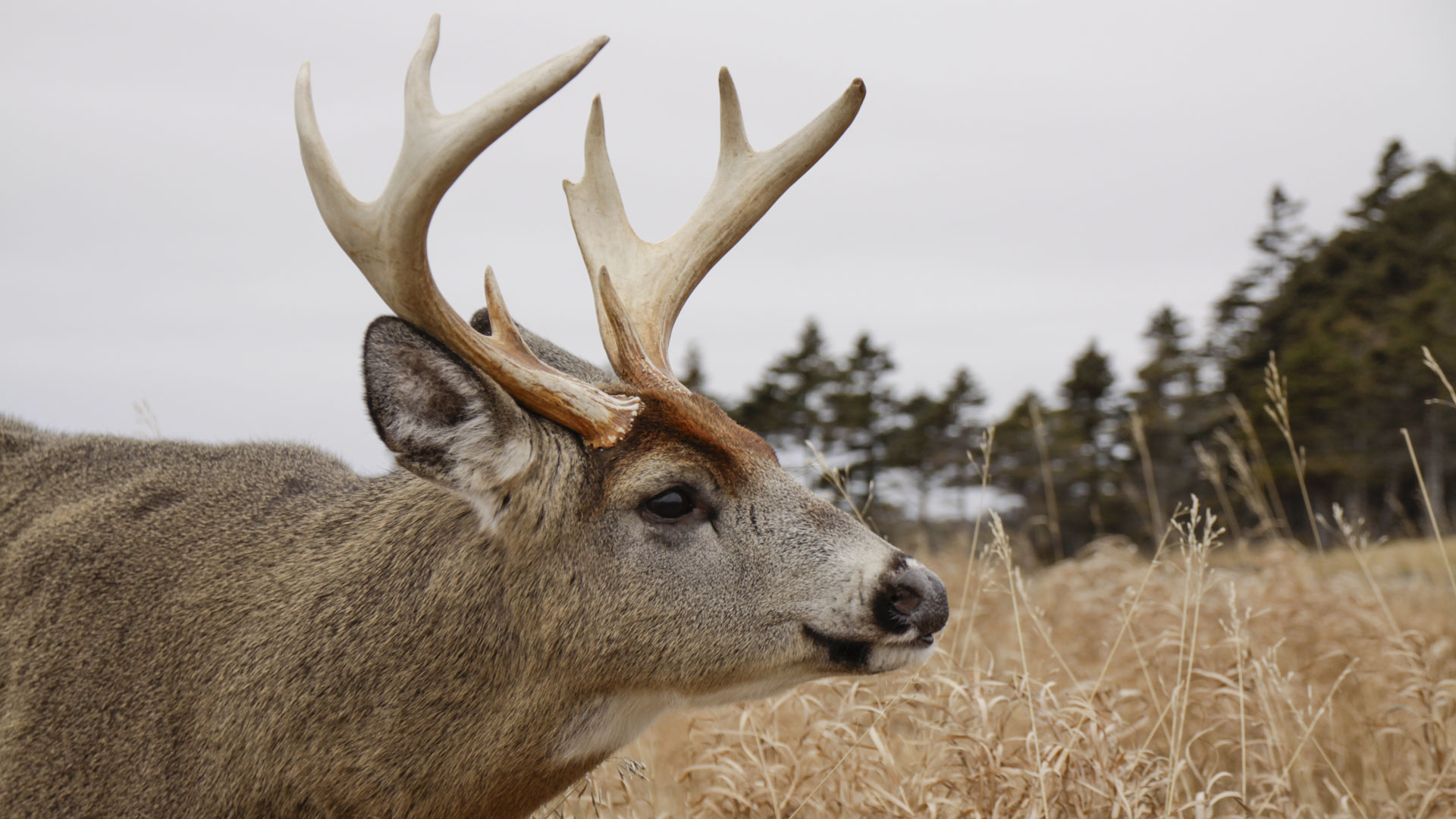
My friend had been in the South African Special Forces a long time before evolving politics forced him to seek another profession. He switched to work as a professional hunter and that’s when I met him. A gun guy, he asked to see my rifles.

“Where are the moderators?” he asked.
“The what?”
He spoke to his wife in Afrikaans and after that exchange rephrased his question.
“The silencers, where are the silencers?”
“Oh, those,” I replied. “You see, this is America, the land of the free, and they are not allowed.”
The “why” of that has long been debated. The version I like is that Prohibition ended Dec. 5, 1933. The government was stuck with a lot of treasury agents and they didn’t know what to do with them. So, on June 26, 1934, in an incredibly short time span for an act of Congress to happen, they passed the National Firearms Act (NFA).
The NFA didn’t actually ban anything, as would be expected if the real problem was crime, rather, it added an excessive tax on certain firearms and accessories. The Bureau of Prohibition, the booze cops, morphed into the Bureau of Alcohol, Tobacco and Firearms (ATF), the gun cops. All those agents and the tax collectors had a job again.
 In 2011, only 22 states allowed silencers to be used in hunting. Today 3.15 million silencers are in use, and 41 states allow hunting with the devices.
In 2011, only 22 states allowed silencers to be used in hunting. Today 3.15 million silencers are in use, and 41 states allow hunting with the devices.
The ATF says it all on their website quite clearly: “… the NFA was enacted by Congress as an exercise of its authority to tax … .” So, they imposed a $200 tax on the guns and accessories mentioned in the NFA, including silencers. In 1934 that was equivalent to $4,631.73 today. Rather excessive in the middle of the Great Depression.
There is no logic here. Including silencers in what was in essence a ban, enforced by federal jail time, is as foolish as saying if you put a muffler on a lawn mower without paying the Crown for permission, we will lock you up. The fact that short-barreled rifles and shotguns were included, but handguns were not, makes no sense either.
Let’s not skip over millions of shooters, including me, suffering with hearing loss today. A loss that didn’t have to happen.
For years most Americans got their ideas about silencers from Hollywood. In the movies a silencer removed all sound except a pfffttttt that sounds like a chipmunk fart. Like most gun-related things in the movies, that was all misinformation. Still, it helped perpetuate the myth that silencers are evil and only used by assassins. That myth still exists today. When silencers came up in legislative debate in my home state of Vermont one of the loudest arguments against them was we would have an increase in assassinations.
We can all be thankful that things have changed in most places and silencers are now if not “mainstream” they soon will be.
So why are silencers becoming popular today? The primary reason in my never humble opinion is simple: inflation and short-sighted bureaucrats.
Being the government, they forgot the economy is dynamic and that inflation is constantly present. They never accounted for what their prohibitive tax would look like 90 years down the road. The $200 tax in 1934, in the middle of the Depression, was as shocking as it was intended to be. Today, it’s dinner for two—without drinks.
That’s probably the No. 1 reason so many folks are adding silencers (or suppressors if you prefer, the terms are interchangeable) on their hunting guns. We hunters have always wanted them; inflation made them attainable.
Everybody’s Doing It
Remember, silencers were never outlawed by the federal government. But a lot of locations, spurred on by Hollywood and their misleading portrayal of silencers as an assassin’s tool, banned them as a result of the government NFA action. Vermont, at the time my South African friend visited, did not allow silencers for anybody, not even law enforcement.
Thanks greatly to the efforts of the NRA and the American Suppressor Association (ASA), Vermont is one of 19 states that changed the rules and now allows silencer ownership. With the exception of Connecticut, the remaining 18 also allow hunting with them.
When the ASA was formed in 2011, there were 285,000 legal silencers in use and only 22 states allowed them for hunting. There are currently 42 states allowing ownership and 41 states allowing hunting with silencers. Today there are more than 3.15 million legal silencers in use in the United States.
The first time I shot a hunting gun with a silencer was years ago in Sweden while on a moose hunt. Kenneth Skoglund was Norma’s point man and the organizer of the hunt. He was an Olympic champion shooter, a dedicated gun guy and perhaps the hardest working man I have ever witnessed on any hunting trip. All the while during the hunt he had a rifle strapped on his back with a silencer on the end of the barrel.
I asked about it and he said it was a .338 Winchester Magnum. I complemented him on his choice of cartridges and asked him if I could shoot the gun. It was amazing how the sound and the recoil of a cartridge I knew so well were both muted.

Remember that in addition to reducing report silencers also reduce felt recoil substantially. I had several more opportunities to hunt with a silenced gun during trips to Europe and Africa. I remained amazed at the reduction in sound and recoil.
A few years later I was hardcore into 3-gun competition, traveling the country to attend matches. The first silencers I saw were novelties, often on guns that we gathered around to shoot after the match. This was a group of very experienced gun guys, so the number of people waiting a turn showed that silencers were still a curiosity in the shooting world. Soon enough, though, they started showing up in the competition. More and more shooters had suppressed rifles until it was so common nobody much noticed.
About that same time American hunters started putting silencers on their rifles. I suppose the first time I saw one in use was on a coyote hunt where we were using AR-15 rifles and some of the industry guys had silencers. I found it interesting that if there was more than one coyote coming to the call, the one not getting shot seemed confused about the location of the shot that whacked his buddy and often stuck around to join him.
Perhaps the most exciting hunt was in East Texas a few years ago with my buddy Tim Brandt, who was handling PR for Norma at the time. He hooked us up with a professional hog hunter with a contract to cull the hog population on several ranches. We were testing the then-new Norma Bondstrike ammo, which worked extremely well. We used AR-type rifles in .308 with silencers and thermal scopes. We severely reduced the hog population, fed a lot of local families and had about as much fun as a man can have without breaking any vice laws.
The main thing I took away was, once again, how the silencers masked the location of the shots. We were often sneaking up on groups of hogs and getting relatively close in the darkness. Once the shooting started, the hogs couldn’t tell where we were and as often as not, ran at us to escape, allowing a much larger harvest. (Don’t bother sending letters about how “sporting” this isn’t. You weren’t there. Besides, our goal was to reduce the population of crop-destroying hogs and nothing went to waste.)
Most recently, in the fall of 2023 I made a decision that if it was legal I would use a silencer on all my domestic hunts. It wasn’t a record year, but I hunted quite a few days in multiple states. I had planned to have a big buck or two and maybe even a bear in photos with my silenced Savage Impulse 7mm PRC rifle accompanying this article.
Look around—you will see they ain’t here. Towsley’s Luck was in a strong cycle in the waning months of 2023.
I won’t go into too many painful details, except to note one hunt in a Midwest state where I let the buck I should have shot walk away. A bigger guy had my attention and I glimpsed him long enough to risk incontinence. He was of course shot on the neighbor’s property a few days later.
Then came Towsley’s Luck. The deer went into lockdown mode, the weather turned anti-hunting and my multi-state luck sucked. “You should have been here last week,” was the theme of the fall. I ended the year with only one suppressed shot fired in the deer woods. That deer was much better suited to my freezer than as a photo prop. Actually, even that’s not quite true. I thought I was taking a nice juicy, young Mississippi doe. It turned out to be a toothless old hag with stringy, tough meat. I just could not catch a break.
I did, however, get a lot of woods time and range time with a silencer on the gun. I experienced a lot of the silenced fall even if no giant bucks were hurt in making it happen.
I had turned to Silencer Central when I was ready to start using a silencer on my personal guns. The great thing about the company, other than excellent products, is that they take care of all the paperwork for you. I have no patience with bureaucratic bullfeces and even less with the kind of person who dispenses it. By using Silencer Central, I only had to answer some questions and send them a few things like fingerprints and a passport photo and their friendly people jumped through all the government hoops for me. I just sat back and waited for it to be complete.
 Silencer Central suppressors of use to hunters including the Banish 22, 30, 338 and 46. Hunters looking to save money and/or weight should check out the Buck 30 and Backcountry.
Silencer Central suppressors of use to hunters including the Banish 22, 30, 338 and 46. Hunters looking to save money and/or weight should check out the Buck 30 and Backcountry.
My first silencer was their Banish 30 Gold, which is their top-of-the-line multi-use, rated for rimfire through .300 RUM. The great thing is that this one silencer can fit easily to multiple rifles and swapping from rifle to rifle is quick and easy. I tried this silencer on several rifles before it ended up on a 6.5 Creedmoor Savage Magpul Hunter.
I think that might be the most accurate factory rifle I have ever used. As a result, the Banish 30 Gold saw a huge amount of range time this past year, testing ammo and long-range shooting.
I waited 15 months for the government to approve that Banish 30 silencer. Owen Miller, vice president of the American Suppressor Association, tells me that things are changing in the time it takes for approval from the King. He said that in some applications using electronic filing, the new owners were able to take possession of their silencers the same day they filed. Miller thinks this will continue to improve and sees a future where the norm for approval is only days or even faster. Perhaps (dare we hope) as quick as the NICS check for buying a new gun.
For the hunting season, I used a Silencer Central Backcountry silencer. This is a 5.5-inch-long titanium silencer that weighs only 7.8 ounces. This smaller size is well-suited for hunting and works well with full-length barrels. It tames the beast in that big 7mm PRC cartridge quite well without becoming a burden in the woods. I hunted from ground blinds several days and found the gun easy to maneuver inside the little pop-up tents. I also hunted from treestands and did a fair amount of still-hunting. At the start, I was worried that I would come to hate the length and weight of any silencer on the end of the barrel, but the truth is, I forgot it was there most days. My ears had great appreciation when I decided to shoot that old crone on the last day of 2023.
The Best Reason
Silencers on rifles are not like most folks believe. They will not “silence” the shot. What they do is “suppress” the noise to a level low enough that it will not cause permanent ear damage.
Take a look at the results of my last hearing test shown here, and see what happens if you fire an unsuppressed rifle too much without ear protection. There are several factors that caused my hearing loss, but shooting is at the top of the list. Even though I am careful to wear muffs, a lifetime of shooting has contributed to that sharp drop-off in the higher frequencies. Trust me, you do not want that to happen to you.

I now wear very expensive hearing aids and still crank up the TV too loud for anyone else to sit in the room. I can’t understand conversation in a noisy place like a restaurant, and it’s been a long time since I have heard beech leaves rustling in the wind, a deer grunt or a turkey drum. Trust me, this is not fun. Hearing loss is preventable in hunters and it is something you need to work hard all your life to avoid. Silencers can help.
The threshold for an impulse noise like a gunshot to cause permanent hearing damage is 140 dB. Most hunting rifles are louder than that. The danger to your hearing grows very fast as the sound gets louder. Owen Miller explained it like this: “The decibel (dB) range is logarithmic, and every 3 dB increase doubles the sound energy. So, a 30 dB increase is not a 10X increase but a 1,000X increase (roughly).”
Some rifles can reach 185 dB or higher, particularly if they are fitted with a muzzle brake. I can remember when the Browning B.O.S.S. first came out I was using a 7mm Rem. Mag. on a whitetail hunt. I jumped a coyote out of the tall CRP grass and shot at him as he ran off. “You missed,” said Mike Jordan, Winchester’s ammo’s legendary point man. “Shoot again!”
“If that was a Boone and Crockett whitetail, I would not shoot this gun again without muffs,” I replied. I often wonder how much damage that shot caused to my already feeble hearing. The truth is, it was only one of hundreds of damaging shots over the years.
 The author has increasingly headed afield with suppressors on his hunting rifles, but last year is the first he hunted the entire season with one.
The author has increasingly headed afield with suppressors on his hunting rifles, but last year is the first he hunted the entire season with one.
Even if your hearing seems to be OK after the ringing goes away, it is not. Permanent hearing damage accumulates and each time a little more is added to the damage of the past. It’s like dropping a dime in a piggy bank. It takes a while to fill the piggy bank, just like it takes a while to become profoundly hard of hearing. You are not even aware of it until people start mumbling and the audio system on your TV begins losing its sound quality. The change is not with them, it’s with you, and it is forever.
Silencers do not silence. They mute the peak impulse of a rifle shot by 20 to 35 dB. Wearing earmuffs or ear plugs when you shoot mutes the peak sound level by 20 to 35 dB. In other words, a silencer on your rifle is going to be almost exactly like shooting it unsilenced while wearing high-quality earmuffs.
The trouble with wearing muffs or plugs when you hunt is not only that they are uncomfortable, but also that you can’t hear the game, your partner’s conversation or any of the joyous sounds of the outdoors. This can be dangerous. With a silencer, you can hear these things and your hearing is protected.
The sound of the shot is muted considerably, which makes the shooting range’s neighbors happy, but the sonic boom of the bullet exceeding the speed of sound as it exits the muzzle is not. That boom will be louder with the powerful cartridges we use for big-game hunting. Even the longer bullets we are tending to use now can increase what you hear. I recently read a multi-page scientific paper on this and my brain hurt for days. The bottom line from that is simple enough: the bigger and longer the bullet and/or the higher the velocity, the louder the sonic crack.
 AH Associate Digital Editor David Herman shot his Kansas buck last year with a Remington 360 Buckhammer fitted with a Banish 46 suppressor.
AH Associate Digital Editor David Herman shot his Kansas buck last year with a Remington 360 Buckhammer fitted with a Banish 46 suppressor.
The speed of sound is defined as 1125 fps. It can vary with ambient environmental factors. I believe the industry standard for subsonic ammo is 1050 fps. Shooting ammo that is slower than the speed of sound through a suppressed rifle shows a remarkable reduction in sound as the sonic boom goes away. However, that is usually not practical for hunting as sub-sonic velocity reduces the power of the ammo and the performance of the bullet substantially.
The silencer controls the sound of the shot itself by routing the expanding gas through a series of baffles so that the overall noise is lowered. The sonic boom remains, but is low enough with hunting cartridges to still be below the 140 dB threshold for hearing damage.
Silencers are common in the hunting woods in many other locations in this world. Some countries in Europe don’t regulate them at all. You can just buy a silencer over the counter like a new scope or a hunting jacket.
Let’s hope this trend of using them on our rifles grows in America until silencers become an expected part of a hunting rifle. So expected that when you show in camp with an unsuppressed rifle, everybody says, “Where is your moderator?”
 Silencer Central Banish Backcountry, left, and Banish 30 Gold, right.
Silencer Central Banish Backcountry, left, and Banish 30 Gold, right.
I Say 'Silencer'
I use the word “silencer” here for a multitude of reasons.
First, it’s the terminology the government uses in the National Firearms Act. Another reason for my choice of words is that the company Silencer Central has been a huge help in my move to using these tools on my hunting guns. So, this is in part a tribute to them and their assistance.
I am well aware that the term suppressor is probably more technically correct and has become the preferred terminology in today’s shooting world. If you are one of the cool kids, you just call it a can.




































